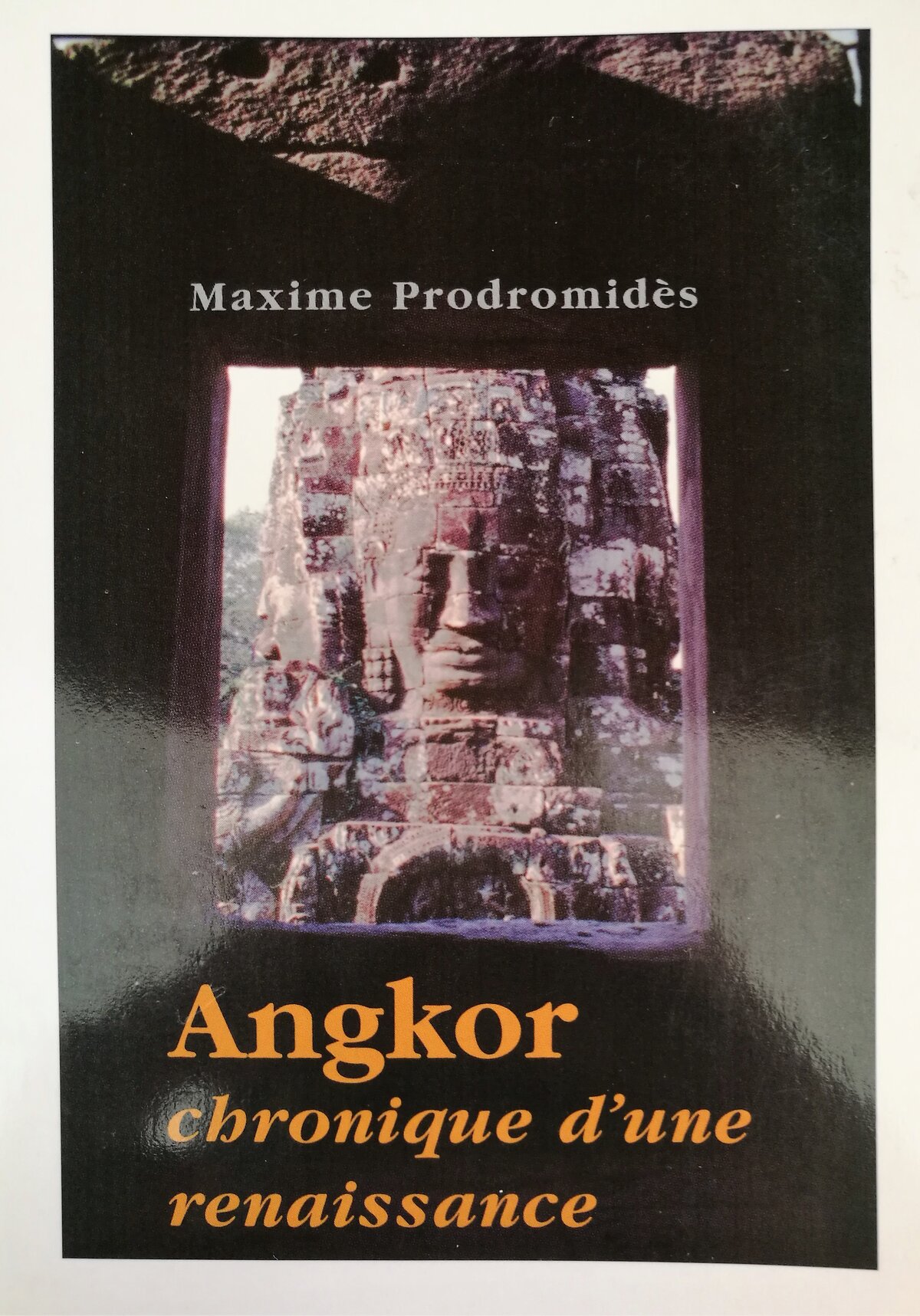Angkor, Chronique d'une renaissance
by Maxime Prodromidès

- Format
- hardback
- Publisher
- Editions Kailash
- Published
- 1997
- Author
- Maxime Prodromidès
- Pages
- 283
- ISBN
- 978284268022
- Language
- French
Through a gallery of vivid portraits, the author describes the fascination Angkor triggered during the modern age among explorers, archeologists, writers, artists…and unscrupulous rogues. From Pierre Loti to Charles Carpeaux, Paul Claudel to the infamous André Malraux’s expedition to Banteay Srei.
It is also a remarkably documented and perceptive study in the history of Angkorian archaeology, the author brilliantly demonstrating how the perception of the vast site evolved with discoveries, novel restoration techniques and the respective personalities of the archaeologists in charge.
Starting with the Chinese chronicler Zhou Daguan (Tcheou-ta-Kouan in the French transliteration), the author does not embrace the theory that the famed visitor of Angkor was a diplomat himself (more of a well-read independent traveler and Buddhist pilgrim coming from a city, Wenzhou, already known for its international trading ambitions), yet remarks that his visit was coincidental with increasing interest to South East Asia from the Mongol dynasty: in 1283, fourteen years before his Chenla journey, two Chinese emissaries sent to the Kingdom of Champa have disappeared, probably opting to stay in these lands where ‘life is easy and women by nature passionate’.
Interesting notations, also, on the second earliest written testimony on Angkor, three centuries later and after the decline and fall of the Khmer Empire, from the Portuguese friar Antonio da Magdalena, not directly from his hand but from what the Franciscan traveler narrated to the great chronicler Diogo do Couto in Goa afterwards.
And then, starting from the 1860 visit by ‘free-lancer’ geographer and botanist Henri Mouhot, comes the saga of the French rediscovery of Angkor. While not shying away from considering the colonialist and political implications at stake, the author portrays the challenging lives of the pioneers of French archaelogy from the end of the 19th century to the post-Khmer Rouge era. Amongst many perceptive notations, we shall retain:
- the ongoing struggle of archaelogists and conservators with the colonial administration to obtain more funds for research and to ensure fair working conditions to the local workforce. While under Bernard Philippe Groslier’s supervision Angkor restoration and exploration site came to employ more than one thousand workers (the largest archaelogical project worldwide) in the 1960s, lack of funding was chronical;
- the passion for sharing their love and respect for the Khmer ruins displayed by most of these archeologists. Even burdened with their own work, they found some spare time to come up with informed guidebooks who became staples for Angkor visitors, such as ‘Le Glaize’ (from Maurice Glaize) or ‘Le Parmentier (edited by Henri Parmentier’s widow, Jeanne Leuba);
- the lucid, honest perception that at some point Angkor should cease being some intellectual playground for French researchers, and find a new life among independent Cambodia. BP Groslier expressed that feeling with straightforward honesty during a symposium at Paris Sorbonne University in 1984: “Certes, le Protectorat colonial a fait rendre par le Siam les provinces khmeres en 1907. Il n’en demeure pas moins que c’est NOUS qui avions commencé les études, qui les avions publiées, a travers nos propres moyens d’approche et nos catégories. Il est clair qu’en agissant ainsi, nous avions dépouillé d’une certaine maniere, non délibérément mais concretement, dépouillé les Khmers de leur passé (…). J’ai quand meme passé vingt ans de ma vie a Angkor et je vais vous dire franchement le fond de ma pensée (…) Il est clair que pendant 75 ans un pouvoir étranger, un pouvoir intellectuel étranger, DES étrangers, ont troné a Angkor, moi ayant été le dernier. Et notre présence était visible. Il est évident que cela a créé une sorte de dichotomie dans la pensée des Khmers vis a vis de leur passé.”
Tags: Angkor rediscovery, explorers, Banteay Srei, EFEO, Zhou Daguan, Antonio da Maddalena
About the Author

Maxime Prodromidès
A French journalist specialized in art history, Maxime Prodromidès came to research and write a great saga of the rediscovery of Angkor (Angkor, Chronique d’une renaissance, 1997) after contributing as a researcher to the documentary film ‘Le secret des temples d’Angkor’.
The angle chosen by Prodromidès in his book was to show how the Khmer artistic and religious vision modeled ancient cities, economic system and landscape, and how French explorers, archaelogists and rebuilders were impacted, including in their personal lives, by the ruins they were laboring on. Henri Mouhot’s description of Angkor Wat as ‘the achievement of an Asian Michelangelo’ in 1860 had a lasting influence.
A specialist in contemporary visual arts, in particular Mallorcan artist Miquel Barceló, he has devoted documentaries and videos to the Porquerolles island, bought by his grand-father Francois Joseph Fournier in 1912 and protected as a French national park in the Mediterranean Sea, He also launched in 2018 SMILO (Small Islands Organization), an environmentalist initiative.
